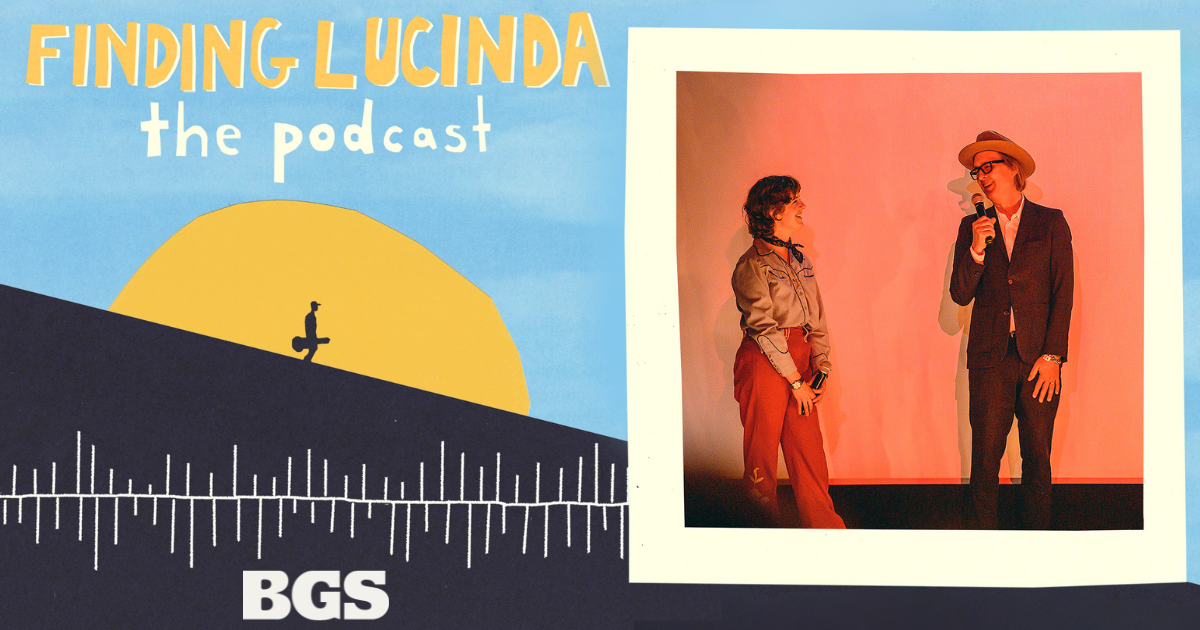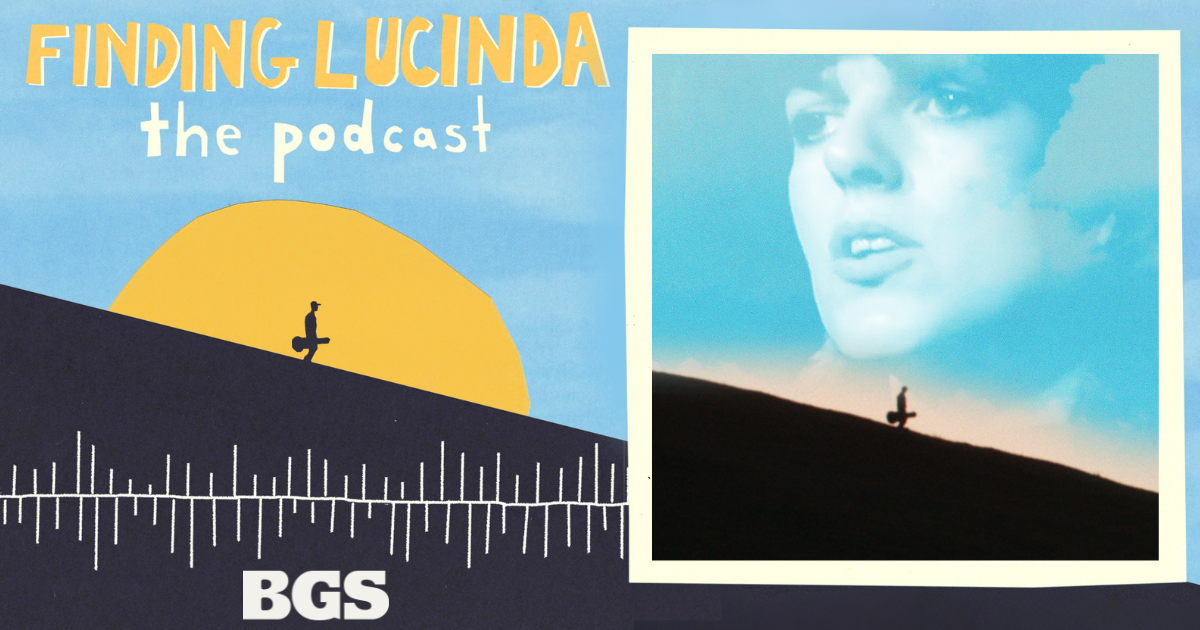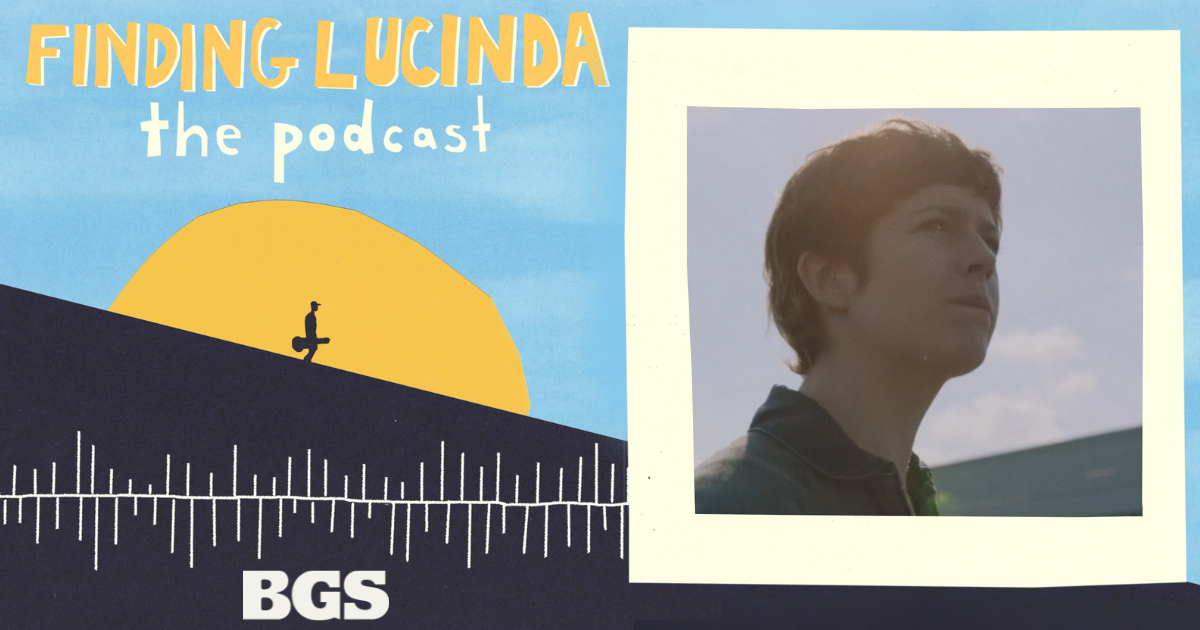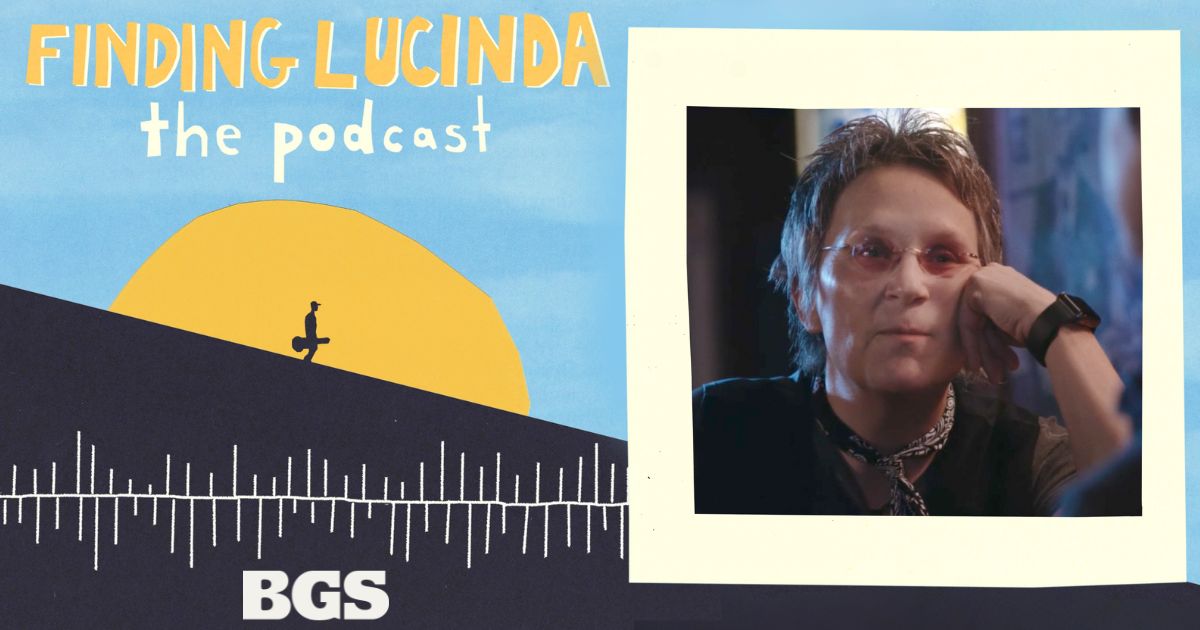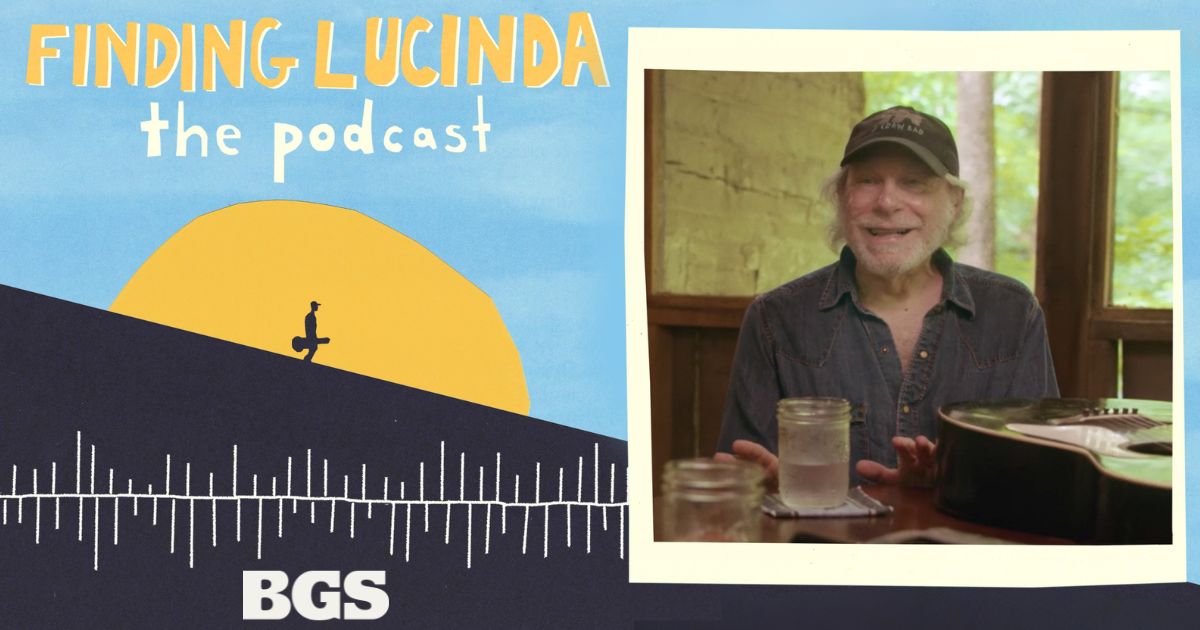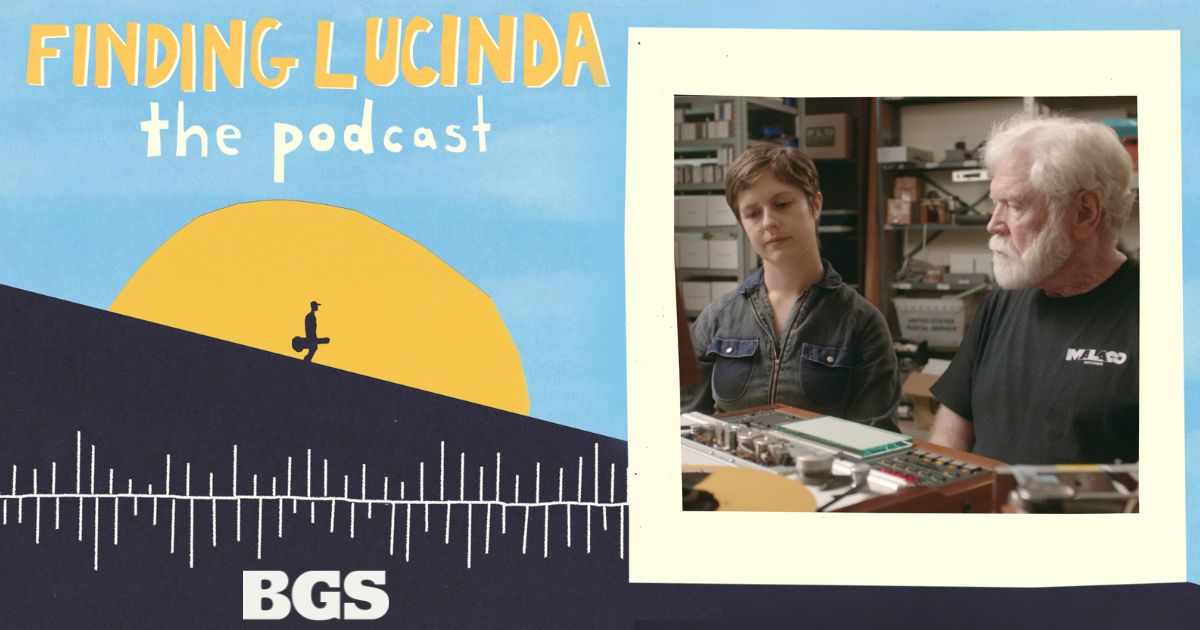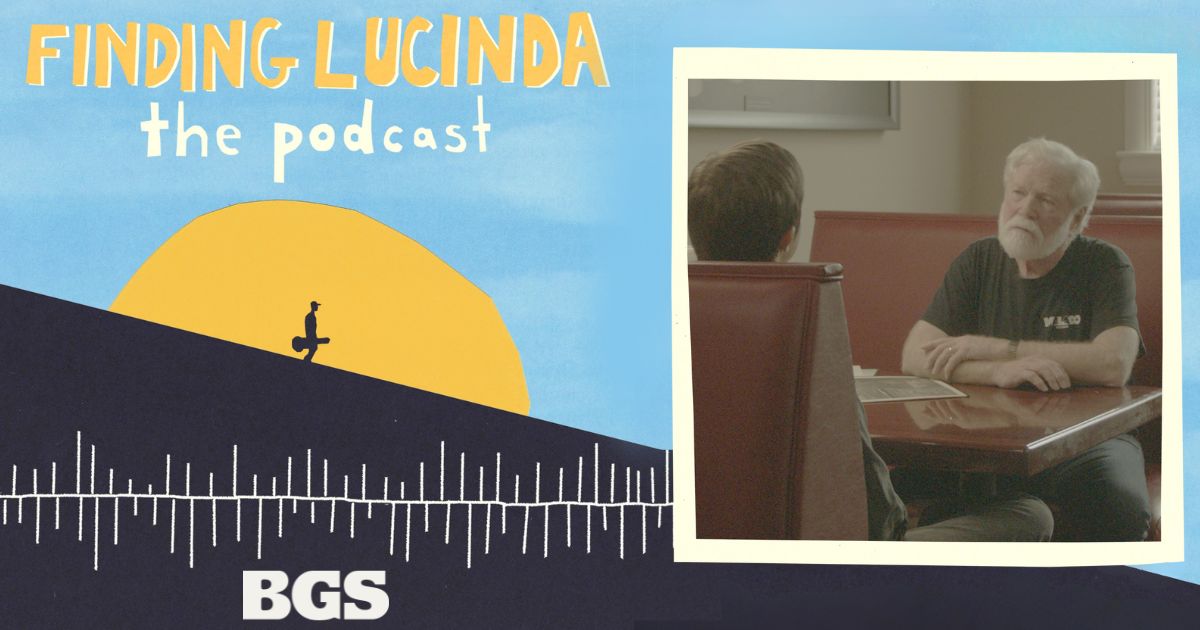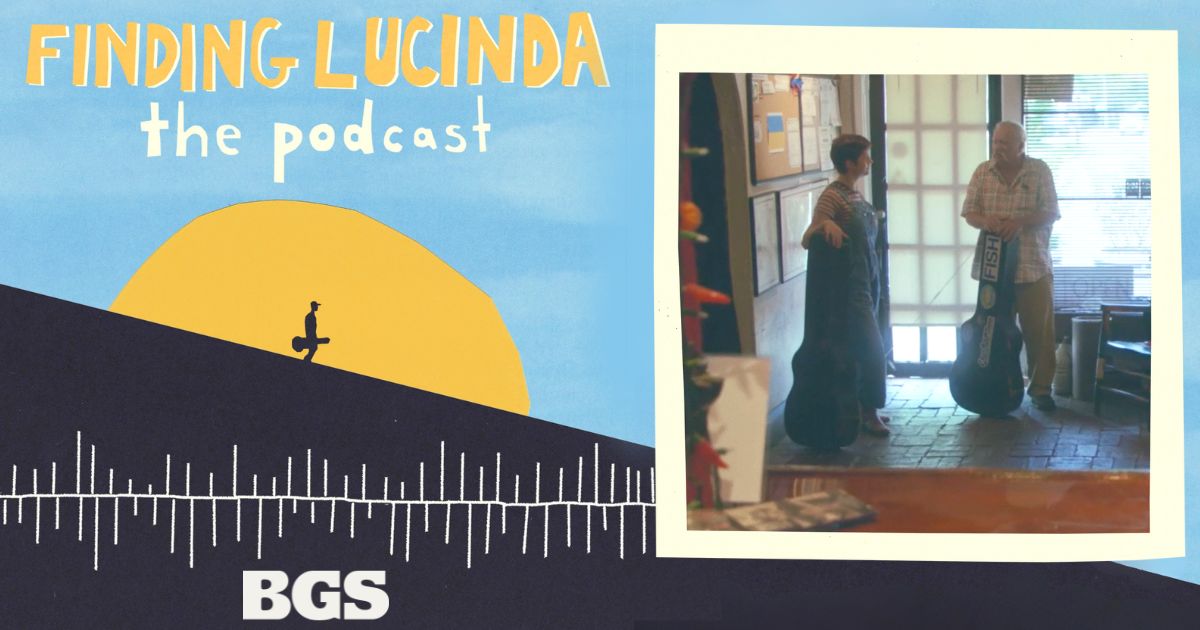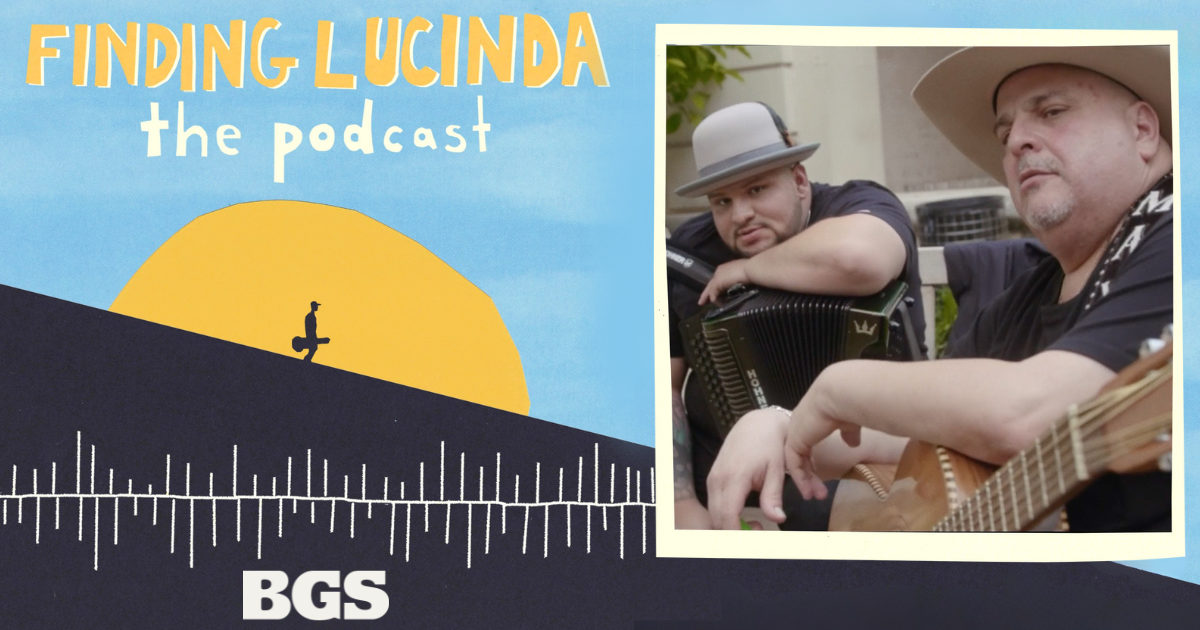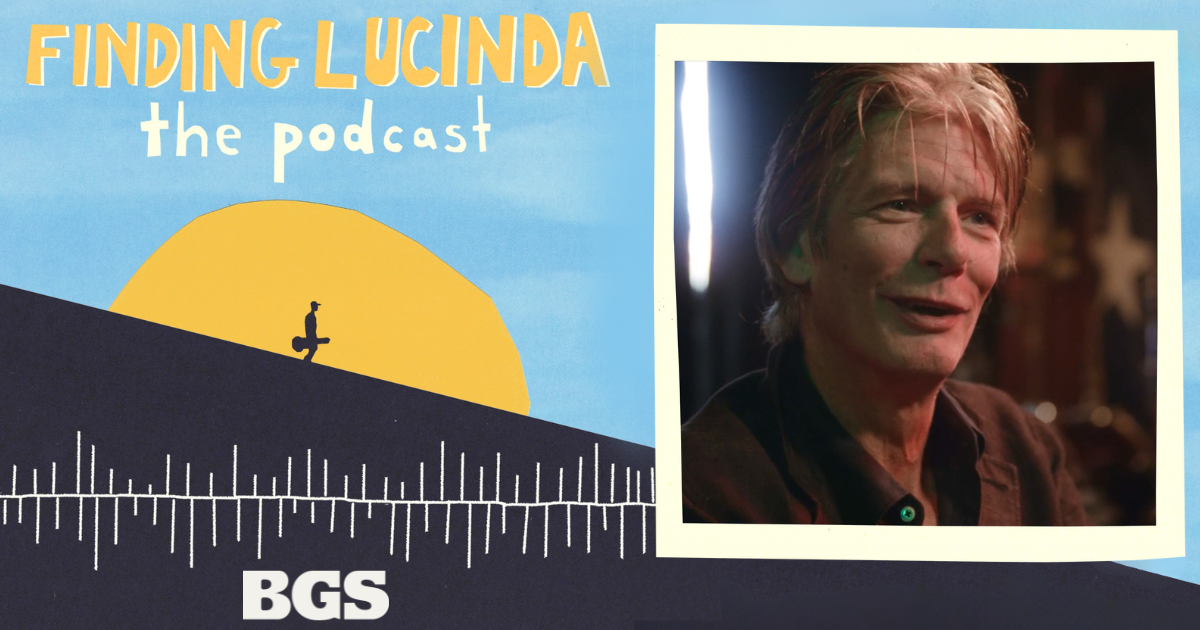After the conclusion of their journey, Ismay tours the nation with screenings of Finding Lucinda, inviting local artists to play Lucinda Williams songs in the round. Following a show at Chico Women’s Club in California, Ismay interviews Chuck Prophet, a celebrated musician who co-produced the film. The pair discuss the origins of the project, what surprised them about making this documentary, and how Lucinda has influenced their songwriting and careers. They also discuss Chuck’s time opening for Lucinda in the early 2000s.
LISTEN: APPLE • SPOTIFY • AMAZON • MP3
Produced in partnership with BGS and distributed through the BGS Podcast Network, Finding Lucinda expands on the themes of Ismay’s eponymous documentary film, exploring artistic influence, creative resilience, and the impact of Williams’ music. New episodes are released twice a month. Listen right here on BGS or wherever you get podcasts.
Finding Lucinda, the documentary film that inspired and instigated the podcast, is now available to purchase, rent, or stream via video on demand. (Watch the film, listen to the soundtrack, or find a screening near you here.) Both the film and podcast showcase never-before-heard archival material, intimate conversations, and a visual journey through the literal and figurative landscapes that molded Lucinda’s songwriting.
Credits:
Produced, recorded, and mixed by Avery Hellman for Neanderthal Records, LLC.
Special thanks to: Rick Anderson, Gavin Jones, Joel Fendelman, Rose Bush, Liz McBee, Mick Hellman, Chuck Prophet, Jonathan McHugh, Sydney Lane, Jacqueline Sabec, Rosemary Carroll, Lucinda Williams & Tom Overby.
Photo Credit: Peter Dervin
Find more information on Finding Lucinda here. Find our full Finding Lucinda episode archive here.
Watch Finding Lucinda, listen to the soundtrack, or find a screening near you here.
